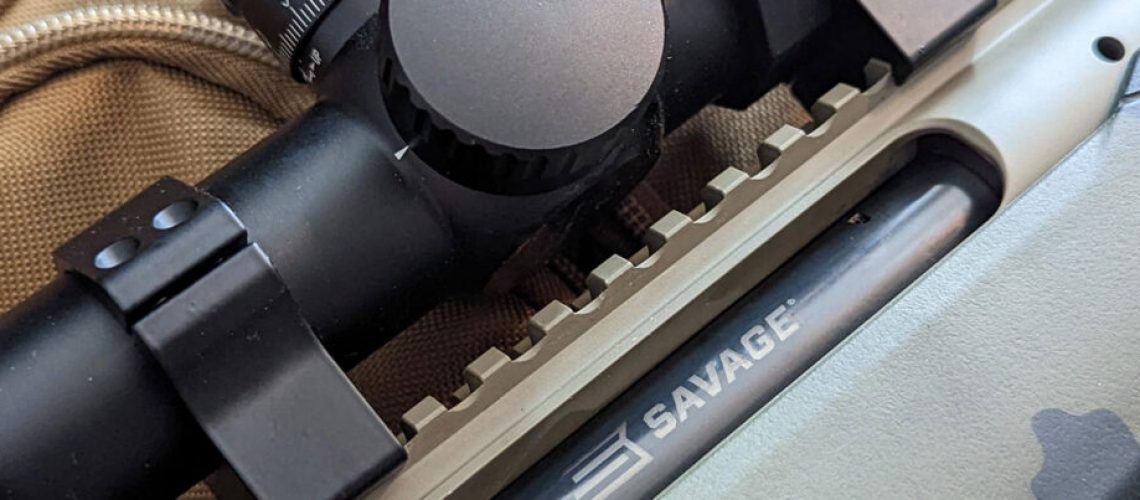Many firearms enthusiasts have no problem whatsoever in buying, and using, their firearm “off the rack” without any alterations.
However, there are a good many others who enjoy adding accessories to improve the use of a firearm for their particular use or preference.
And, in many cases, adding a functionality to a firearm involves the use of a rail system.
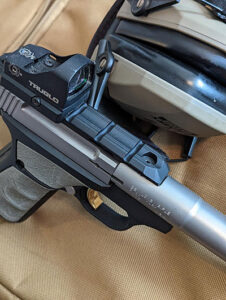 WEAVER
WEAVER
The telescopic sight company of William Ralph Weaver came out with their rail attachment system in 1975, and kept experimenting to improve it through the 80’s.
The Weaver rail pioneered rail-style attachments, and was the precursor to the Picatinny that would follow it. Flat dovetail rails with perpendicular slots, the Weaver rails may not have been the first rail system, but certainly were the most widely used.
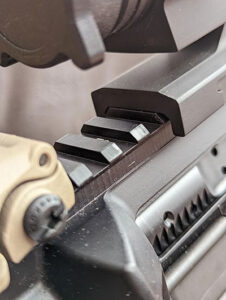 PICATINNY
PICATINNY
Born from a desire to standardize Weaver rails, the A.R.M.S. company began work on what would eventually evolve into the Picatinny rail back in the early 80’s.
In 1992, the Picatinny Arsenal in New Jersey took up the task of developing a standardized mounting system for the US Army. Adapting the prominent Weaver system and adjusting those dimensions, a new system was born—colloquially taking on the Picatinny name (as well as being known as the more of a mouthful military designation of Mil-STD-13.)
Are Weaver & Picatinny components interchangeable?
Some are, some are not. Featuring a more angular construction than the Weaver, the Picatinny specifies squared bottom slots while the Weaver sometimes was open to use square or rounded cuts at the bottom of the slots. There is also a specification difference in the slot spacing; Picatinny rails have slots cut at regular intervals, whereas Weaver did not specify an exact distance between slot cuts and the slot position by application. This means that most accessories created for Weaver slots are likely to fit a Picatinny, while the opposite is not necessarily true. Weaver can still be a great system for something like scope rings, but for a truly modular system, it makes sense that Picatinny took over.
 KEYMOD
KEYMOD
In 2012, VLTOR Weapon Systems and Noveske Rifleworks teamed up to create the KeyMod system.
Named for the keyhole mounting feature (it’s even in the logo) and modular versatility of the platform, the design is open source. The public domain nature of the system means manufacturers can make accessories utilizing the system without compensating the originators.
Also, the KeyMod system isn’t as heavy as the Picatinny system. No additional adapters are necessary, and there are no sharp edges, making it easier and more comfortable to handle firearms than the Picatinny system.
With KeyMod, rails only need be placed where needed.
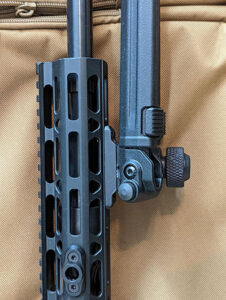 M-LOK
M-LOK
M-LOK was introduced in 2014 when Magpul Industries launched their variant to the KeyMod playform. Created to function efficiently with polymer attachments, the M-LOK’s t-shaped attachment lugs allow for accessory placement to the front or to the rear of rail slots.
Unlike the KeyMod, M-LOK is not open source. However, it is free license, so manufacturers have to get a license from M-Lok to make products using the system.
In 2017, in a report for the United States Special Operations Command, M-LOK was superior to KeyMod in the areas of repeatability, drop testing, and failure load testing—although the two systems were roughly the same in the areas of endurance and rough
handling testing.
Now in 2022, M-LOK has generally taken over, except in a few applications where there is minimal space on the back side of the rail where KeyMod has the advantage of being a lower profile system.
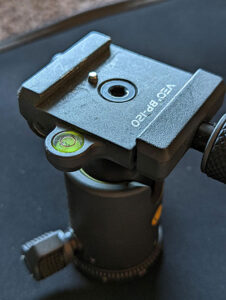
ARCA-SWISS
Developed for the camera industry in the 90’s, the Arca-Swiss system was originally a two-piece system making use of a plate (attached to a camera or for our purposes the handguard or chassis of a rifle). The second piece is the mounting base,
or clamp, where the plate is attached and secured.
Arca-Swiss mounts can now be found on tripods and bipods for rifles, an extension of the original use in the camera industry. Western hunters who use spotting scopes and mounted binoculars may be familiar with this system.
Accessories may be pricey, as there isn’t a ton of product out there as the system transitions from photography. New products being introduced is helping the cost to decline on items for the system.
11mm
The 11mm (3/8 inch) rail design is a dovetail configuration popular with airguns and rimfire weapons due to limited recoil. Some shotguns like Beretta also have an 11mm groove to mount a detachable optic. This is also a dovetail groove design,
like a miniature Weaver rail. Many 11mm mounts do not even have slot cuts or recoil lugs and rely purely on the clamping strength of the optic or accessory. This makes sense for low recoil systems, but does not hold up to tougher applications. Interestingly,
the 11mm standard is a major player in the world of crossbows, too.
PROPRIETARY SYSTEMS
There are a number of mounting systems that are proprietary to firearm manufacturers. Glocks may appear to be Picatinny, however, they are not made for that express purpose and therefore the accessory may not line up where desired.
Pre-04 Walther models are proprietary, as are most railed Sig Sauer handguns. Many of these proprietary systems are based on the Weaver or Picatinny concept, but adapted to the specific dimensions and requirements of the firearm at hand. For example,
the Sig P365 is narrower than Picatinny or Weaver slots, so a proprietary rail based on those concepts was created.
Therefore, there are a smaller number of accessories available for these non-standard systems.
Like anything that involves adapting your firearm to your personal use, one should consider the benefits of each system as it relates to the accessory you’re wanting to utilize. Then, the versatility of the system, also based on your personal requirements.
While building and customizing with these systems seems simple enough to do on your own, don’t hesitate to call a gunsmith or ask for help if you run into trouble. The versatile nature of these systems means there are a lot of ways to go wrong or force
a component to work, when another mounting system may actually work better. You don’t want your gun to end up looking like your brother-in-law’s stereo from the 90’s—with adapter connected to another adapter, connected to who knows what.
